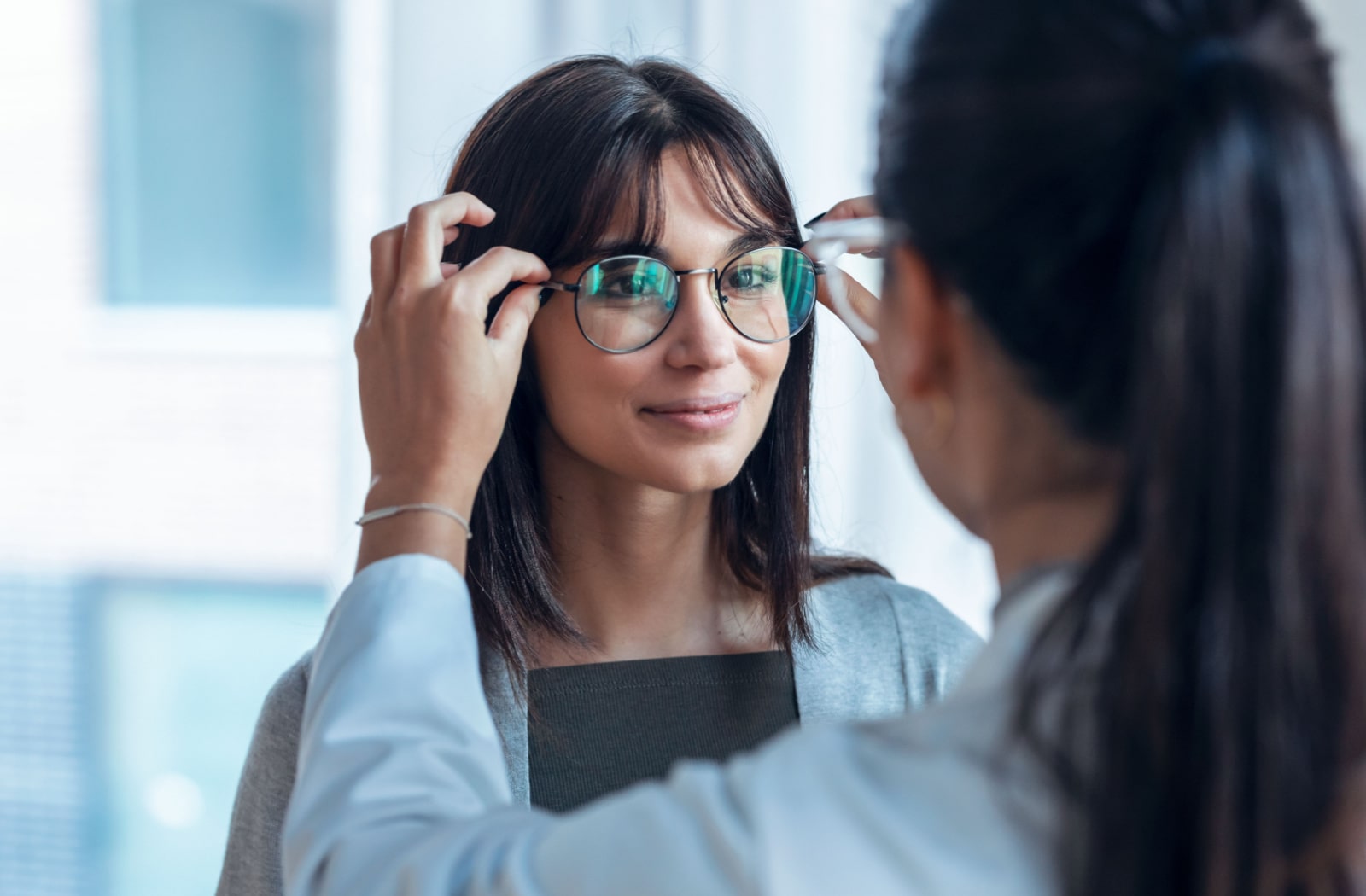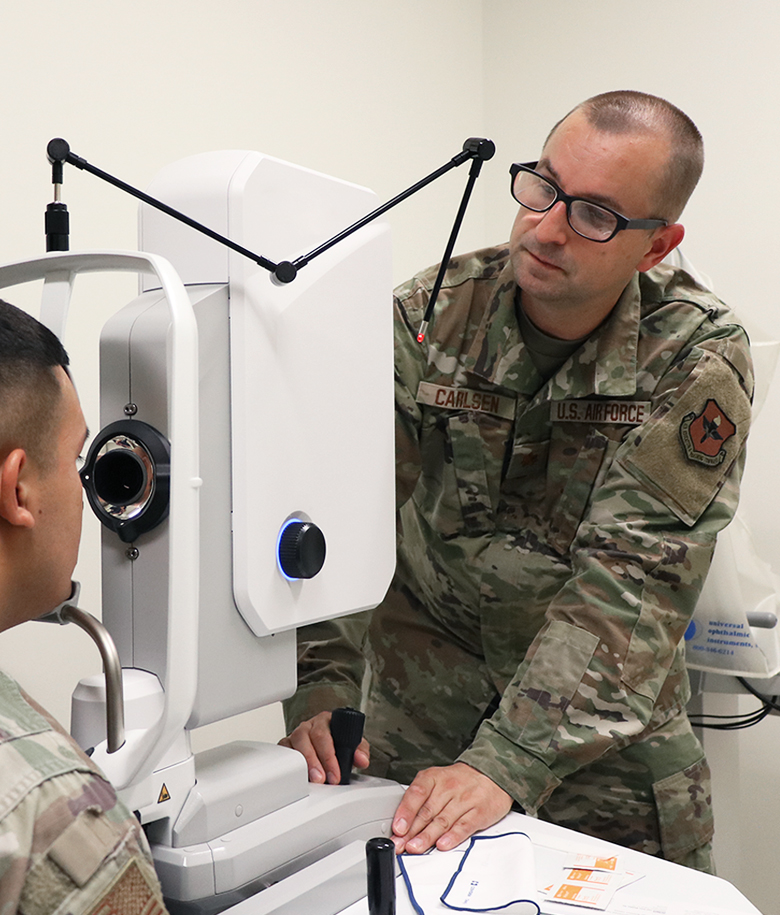Exactly How an Eye Doctor Can Transform Your Vision Health in Chino
Exactly How an Eye Doctor Can Transform Your Vision Health in Chino
Blog Article
Exploring the most up to date Technical Improvements in Optometry and What They Mean for Eye Doctors
In the ever-evolving field of optometry, recent technical improvements are improving how practitioners come close to eye treatment. From the precision of Optical Coherence Tomography to the nuanced understandings provided by AI-driven diagnostic devices, these advancements are establishing brand-new standards in patient evaluation and treatment. Teleoptometry is positioned to redefine ease of access, ensuring that experience goes beyond geographical limitations. As these advancements permeate the method, optometrists are confronted with the challenge of welcoming these tools to boost client end results. The question stays: just how will these technological shifts redefine the roles and responsibilities within the occupation?
Innovations in Diagnostic Equipment
Progressing the field of optometry, developments in diagnostic devices have actually transformed the means eye treatment specialists analyze and diagnose visual disabilities and eye conditions. The past years has seen considerable technical innovations, allowing more extensive and accurate evaluations. Optical Comprehensibility Tomography (OCT), as an example, offers high-resolution cross-sectional photos of the retina, enabling the very early discovery of illness such as glaucoma and age-related macular deterioration. This non-invasive imaging strategy has actually come to be crucial in modern optometric method.
Another key advancement is the introduction of advanced corneal topography systems, which map the surface area curvature of the cornea with accuracy. These tools are especially useful for suitable contact lenses and diagnosing corneal conditions. Electronic retinal imaging has actually transformed standard ophthalmoscopy, supplying thorough, panoramic sights of the retina that promote detailed aesthetic examinations.
The advancement of wavefront aberrometry has additionally been important, enabling the analysis of refractive mistakes with unrivaled precision (Eye Doctor). This innovation assists in tailoring restorative lenses and boosting medical outcomes for refractive surgical treatments. Jointly, these diagnostic developments empower optometrists to supply remarkable client care, guaranteeing early intervention and tailored treatment strategies, eventually improving visual health end results
AI in Person Monitoring
Building on the structure of cutting-edge diagnostic devices, the incorporation of synthetic intelligence (AI) in client administration represents a transformative leap for optometry. AI systems are progressively utilized to enhance performance, precision, and customization in client care. By assessing large amounts of information, AI can determine patterns and predict potential eye problems, enabling eye doctors to tailor interventions better. This capacity is critical in managing persistent eye diseases such as glaucoma and diabetic person retinopathy, where very early detection and continuous surveillance are key.
Moreover, AI-driven systems facilitate structured patient interactions and administrative processes. Automated scheduling, digital assessments, and customized follow-up plans not just boost client complete satisfaction however also maximize time monitoring for experts. These systems can triage patients based upon the necessity of their conditions, making certain that those in important demand get prompt attention.
Moreover, AI boosts decision-making by supplying eye doctors with evidence-based referrals and therapy paths. By integrating information from digital wellness documents, AI tools provide understandings that educate clinical decisions, minimizing the threat of errors and enhancing person outcomes. As AI remains to develop, its role in individual monitoring will likely increase, improving the landscape of optometric care.
Advances in Retinal Imaging
In the realm of optometry, retinal imaging has witnessed impressive technical advancements that are enhancing analysis abilities and client treatment. Developments such as Optical Coherence Tomography (OCT) and fundus digital photography have actually transformed how eye doctors picture and assess the retina.
Improved imaging modalities like OCT angiography are additional refining analysis accuracy. This non-invasive strategy maps blood flow in the retina, providing crucial understandings into vascular wellness without the demand for dye shots. In addition, adaptive optics modern technology is being integrated into retinal imaging systems to correct ocular aberrations, supplying unmatched image quality. Such innovations assist in the recognition of minute retinal adjustments that can signify condition development.
Furthermore, innovations in synthetic knowledge are boosting retinal imaging by allowing computerized analysis of large datasets. These systems help eye doctors in identifying patterns a sign of pathology, therefore enhancing diagnostic precision and performance. Jointly, these innovations are transforming retinal imaging right into a keystone of modern-day eye treatment, improving results and increasing therapeutic possibilities.
Teleoptometry's Growing Role
Teleoptometry is significantly ending up being an important element of eye care, driven by advancements in data and analysis tools. As optometry welcomes electronic transformation, teleoptometry promotes remote assessments, allowing optometrists to prolong their services beyond standard limits. This is especially helpful in underserved and rural locations where access to specialized eye care is usually limited. By leveraging high-resolution video clip conferencing and progressed retinal imaging, optometrists can conduct extensive eye exams from afar, making certain prompt diagnosis and treatment.
The integration of expert system (AI) more improves teleoptometry, enabling the analysis of visual information and helping in the detection of ocular conditions such as glaucoma and diabetic retinopathy. AI-powered formulas can quickly translate complex imaging information, offering eye doctors with beneficial insights that bolster professional decision-making.
Additionally, teleoptometry sustains connection of care via seamless assimilation with electronic wellness records (EHRs), allowing eye doctors to preserve comprehensive person backgrounds. When consulting with different professionals., this makes sure that individuals obtain consistent and customized care also.
Despite these advantages, obstacles remain, including guaranteeing information security and managing patient assumptions. However, teleoptometry stands for a significant stride in the direction of more easily accessible, reliable, and patient-centered eye treatment. As innovation progresses, its duty is positioned to broaden additionally.

Future Fads in Eye Treatment
A myriad of ingenious patterns is readied to improve the future of eye care, driven by technological advancements and the developing requirements of clients. One significant trend is the integration of man-made knowledge (AI) in diagnostics, which assures to improve the accuracy and effectiveness of eye exams. AI formulas can analyze large amounts of information from retinal pictures, potentially spotting problems like diabetic person retinopathy and glaucoma earlier than standard techniques.
Additionally, tailored medicine is gaining grip in optometry, with genetic screening from this source educating tailored treatment internet plans. This technique intends to maximize person results by tailoring treatments to private genetic accounts. Wearable modern technology, such as smart contact lenses, is likewise imminent, offering real-time surveillance of intraocular pressure or sugar levels, hence offering continual understandings into ocular and systemic wellness.
The adoption of increased truth (AR) and digital truth (VR) in training and client education and learning is one more arising fad. These technologies use immersive experiences that can boost understanding and skills both for patients and optometrists. As these fads progress, eye doctors need to remain abreast of technological innovations to supply advanced treatment, making certain improved person results and satisfaction in the dynamic landscape of eye treatment.
Conclusion

Collectively, these analysis advancements equip optometrists to supply remarkable person treatment, making sure very early intervention and customized therapy approaches, eventually boosting aesthetic health and wellness outcomes.

As these technologies continue to develop, eye doctors must adjust and include them into method, inevitably optimizing workflow effectiveness and raising visit our website the requirement of eye care supplied to individuals.
Report this page